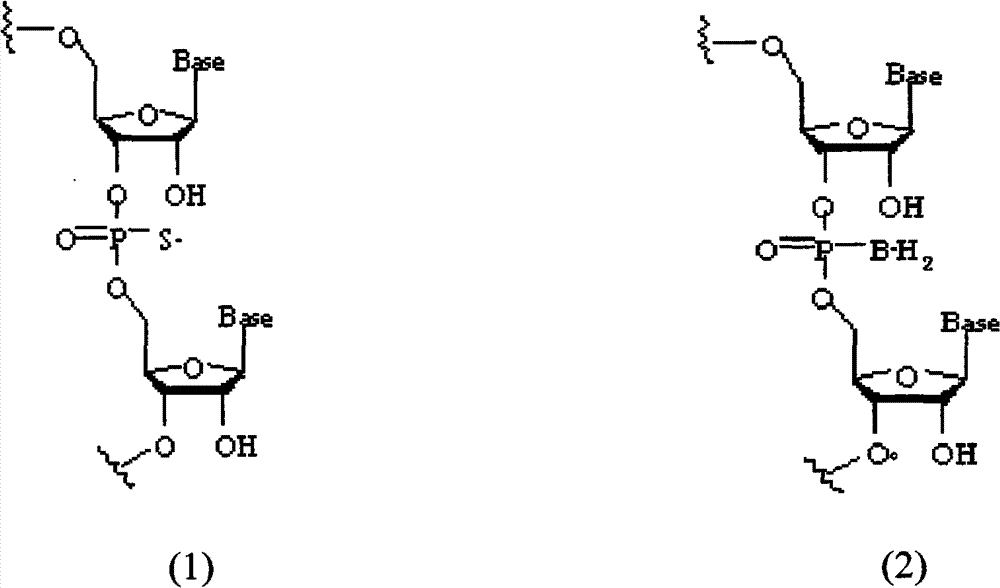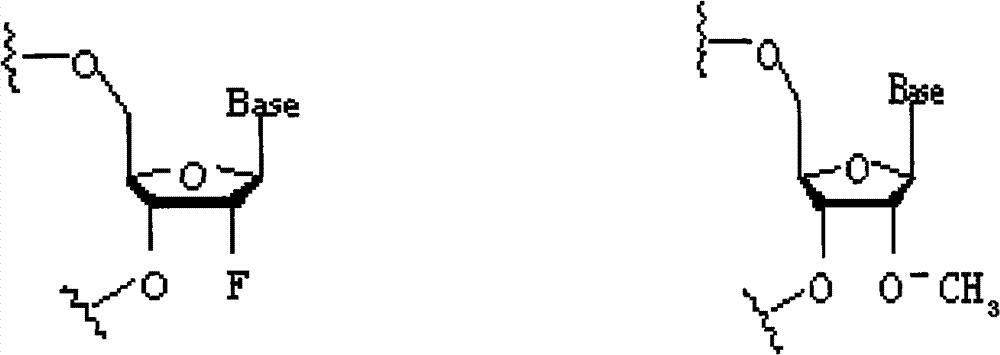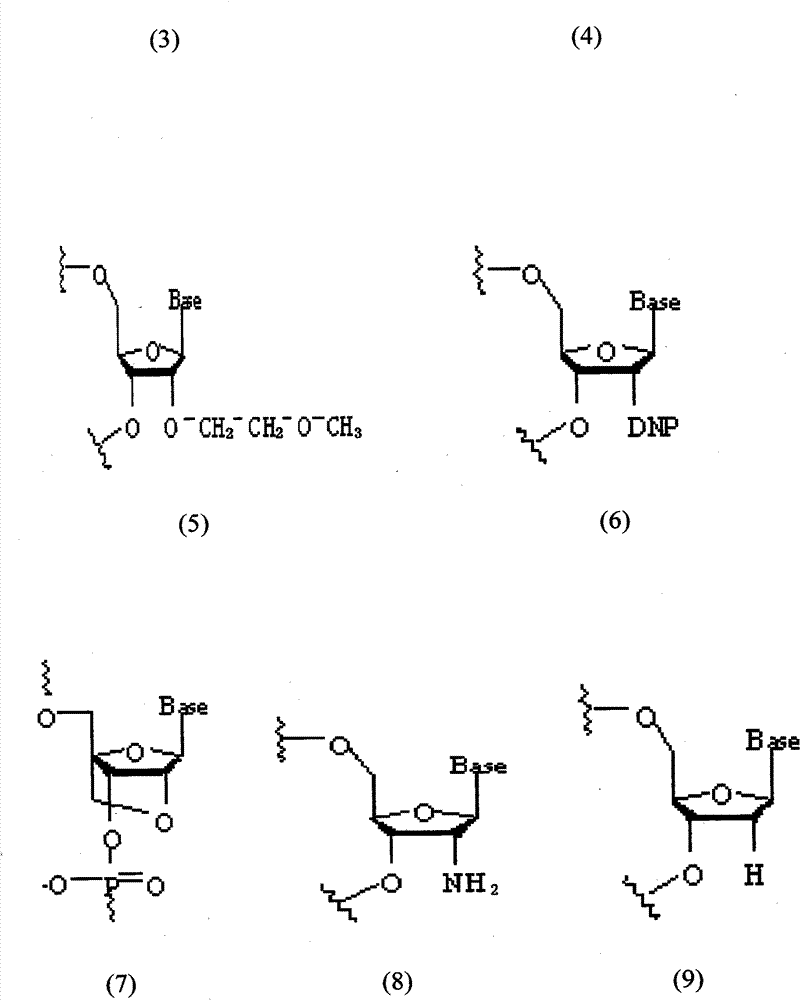Small interference RNAs for human GSK-3beta gene and application thereof
A β gene and small molecule interference technology, applied in the field of nucleic acid, can solve the problems of low selectivity and easy side effects, and achieve the effect of low toxicity and side effects
- Summary
- Abstract
- Description
- Claims
- Application Information
AI Technical Summary
Problems solved by technology
Method used
Image
Examples
preparation example Construction
[0051] The preparation method of siRNA provided by the invention includes the design of siRNA sequence and the synthesis of siRNA sequence.
[0052] siRNA design refers to: firstly, through http: / / www.dharmacon.com / designcenter / DesignCenterPage.aspx server, select 19bp or 21bp within the gene coding region of GSK-3β gene cDNA sequence (Genbank accession number is NM_002093.2) the nucleotide sequence. The principle of selecting the 19bp or 21bp nucleotide sequence through http: / / www.dharmacon.com / designcenter / DesignCenterPage.aspx server is: (1) total siRNA double bond energy <1; (2) antisense strand 5' end binding energy 3-9; (3) sense strand 5' end binding energy 5-9; (4) GC content between 36-53%; (5) antisense strand 5' end and sense strand 5 ' The energy difference between -1 to 0. After selection according to the above principles, the candidate siRNA target sites were compared with human gene sequences by BLAST analysis to exclude those with high sequence homology with ...
Embodiment 1
[0067] Embodiment 1 siRNA design and synthesis
[0068] The human GSK-3β gene (NM_002093, NM_001146156) was extracted from the NCBI website, and the siRNA shown in Table 1 was designed using the online software http: / / www.dharmacon.com / designcenter / DesignCenterPage.aspx. The designed siRNA was entrusted to Shanghai Aibosi Biotechnology Co., Ltd. for synthesis.
[0069] Table 1 siRNA against human GSk-3β gene
[0070]
Embodiment 2
[0071] Example 2 Cell Culture and Transfection
[0072] Cell culture: human osteoblast MG-63 (purchased from the Cell Bank of the Type Culture Collection Committee of the Chinese Academy of Sciences), cultured in 10% FBS-DMEM medium (FBS was purchased from Gibco, DMEM was purchased from Hyclone), and 2mM L-glutamine was added Amide, 37°C, 5% CO 2 cultured in a saturated humidity incubator.
[0073] siRNA transfection:
[0074] 1) Human osteoblasts MG-63 were cultured in a 10cm dish until 70-80% confluent, and seeded in a 6-well plate.
[0075] 2) Press 2.5×10 5 Inoculate a 6-well plate at the concentration of cells / well, mix well and store at 37°C in 5% CO 2 Cultivate for 24h.
[0076] 3) Take 11 sterile 1.5mL EP tubes (Group A) and add 250μl Opti-MEM I respectively, then add 100pmol siRNA (siRNA GSK-3β1-10, without siRNA as a control), and take the other 11 Add 250μl Opti-MEM I to sterile 1.5ml EP tubes (group B), respectively add 5ul of the selected transfection reagen...
PUM
 Login to View More
Login to View More Abstract
Description
Claims
Application Information
 Login to View More
Login to View More - R&D
- Intellectual Property
- Life Sciences
- Materials
- Tech Scout
- Unparalleled Data Quality
- Higher Quality Content
- 60% Fewer Hallucinations
Browse by: Latest US Patents, China's latest patents, Technical Efficacy Thesaurus, Application Domain, Technology Topic, Popular Technical Reports.
© 2025 PatSnap. All rights reserved.Legal|Privacy policy|Modern Slavery Act Transparency Statement|Sitemap|About US| Contact US: help@patsnap.com



